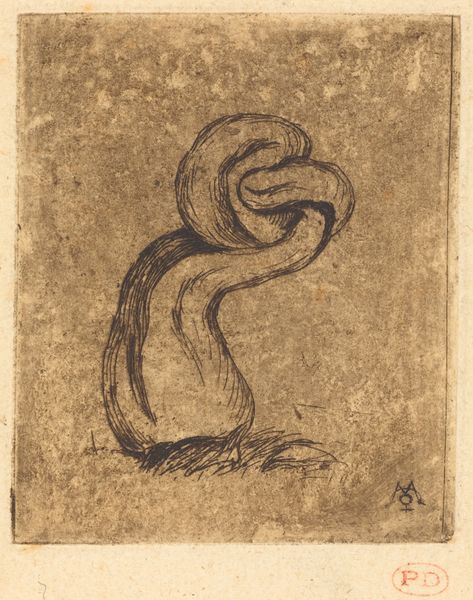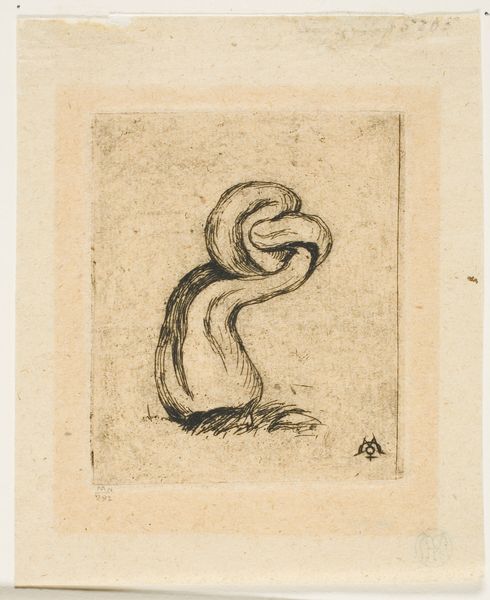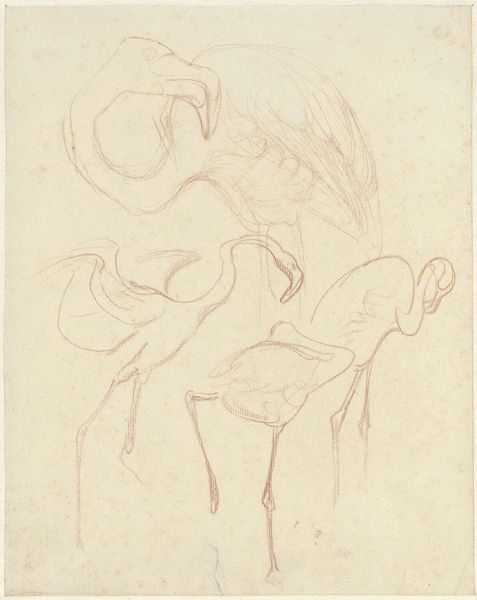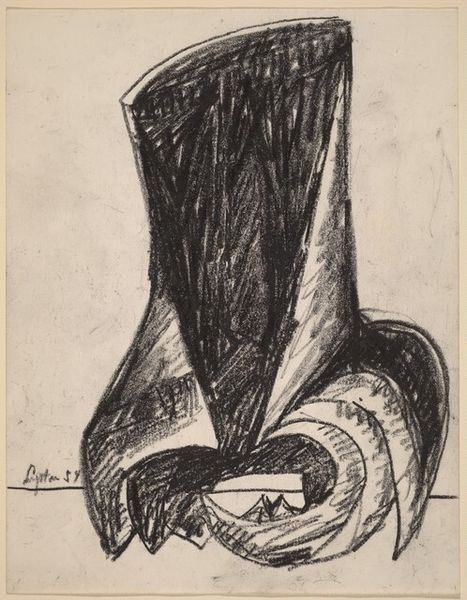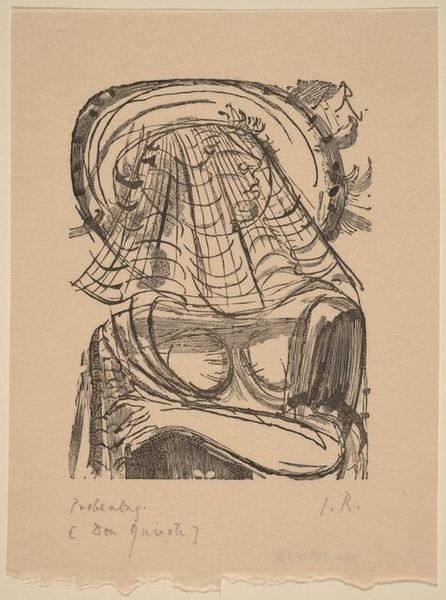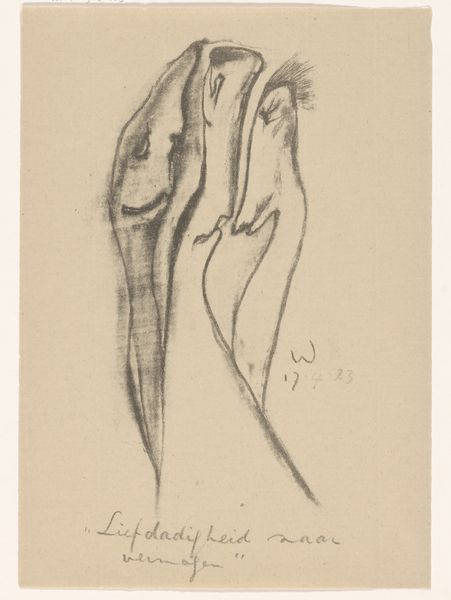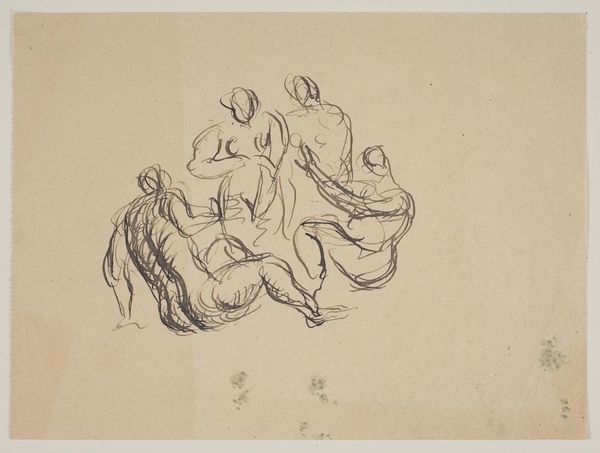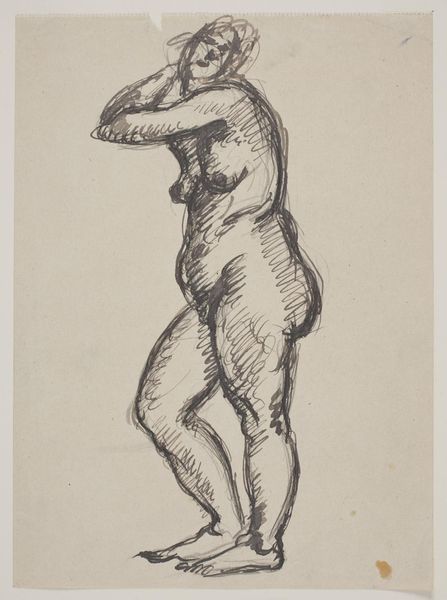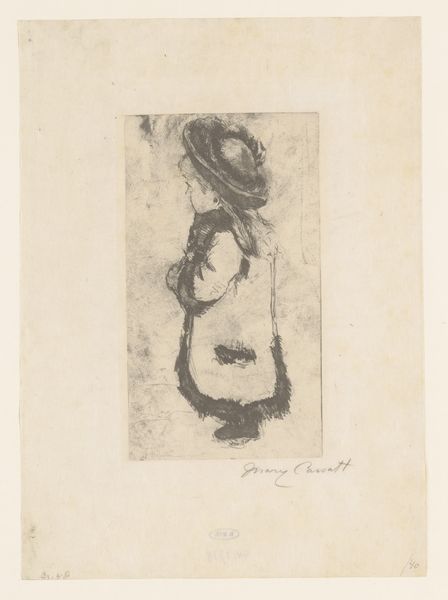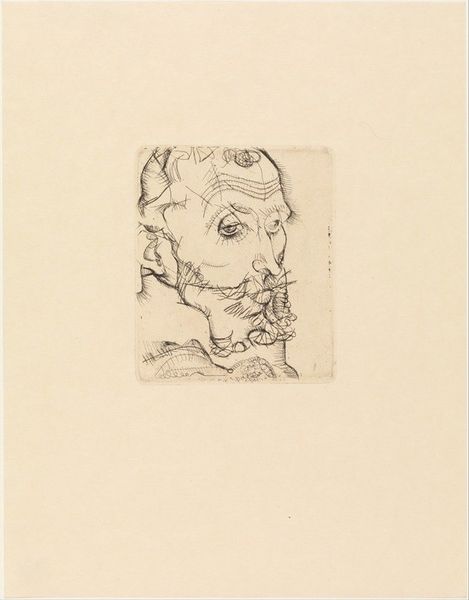
drawing, print, etching, paper, ink
#
drawing
#
aged paper
#
toned paper
#
light pencil work
# print
#
etching
#
pencil sketch
#
landscape
#
paper
#
form
#
personal sketchbook
#
ink
#
ink drawing experimentation
#
pen-ink sketch
#
line
#
sketchbook drawing
#
pencil work
#
sketchbook art
#
realism
Dimensions: height 70 mm, width 59 mm
Copyright: Rijks Museum: Open Domain
This is Charles Meryon’s “Misvormde paddestoel (Cryptogamae)”, made in the mid-19th century using etching. This printing technique involves drawing with a sharp needle through a waxy ground on a metal plate, which is then exposed to acid. The acid bites into the metal where the ground has been removed, creating an incised line that holds ink. The resulting print has a distinctive character. Notice how the etched lines define the form of the mushroom, creating a sense of depth and texture. The quality of the line is crucial here; it’s not just a way to represent the mushroom, but an integral part of its visual presence. Meryon was deeply engaged with the craft of printmaking, and this is evident in the meticulous detail of his work. The image reminds us that printmaking is not merely a reproductive process, but a skilled practice with its own aesthetic values. This approach elevates it beyond mere reproduction, aligning it more closely with the realm of fine art.
Comments
No comments
Be the first to comment and join the conversation on the ultimate creative platform.
